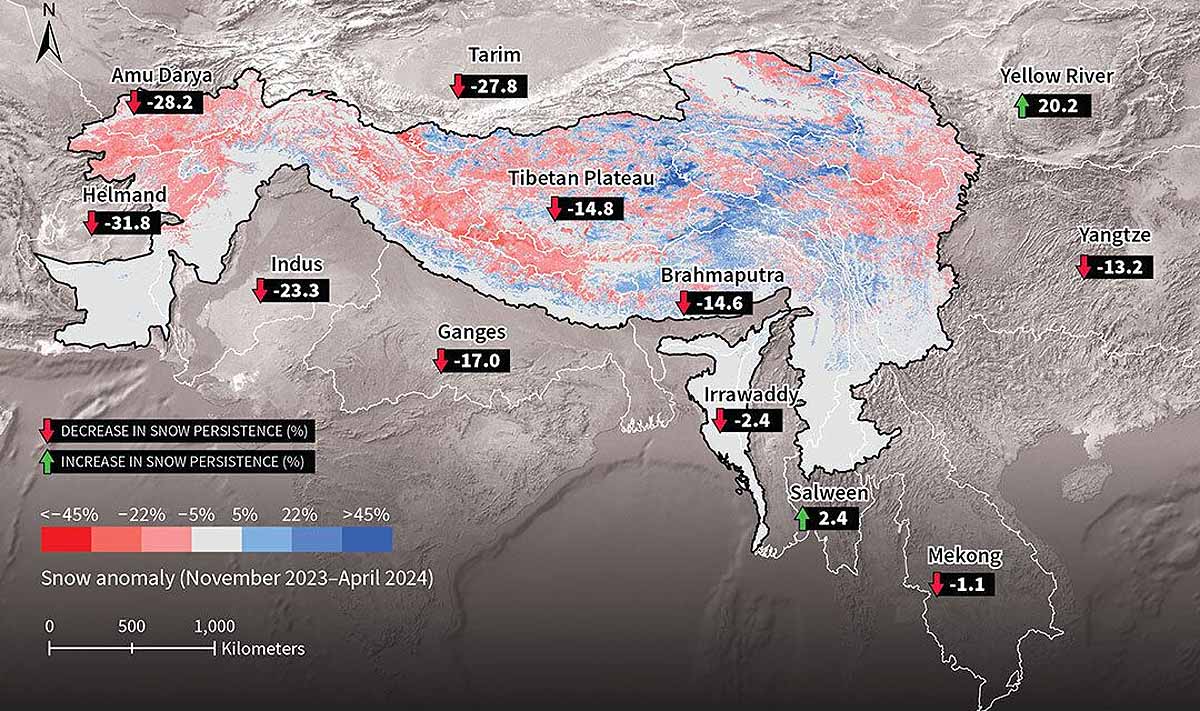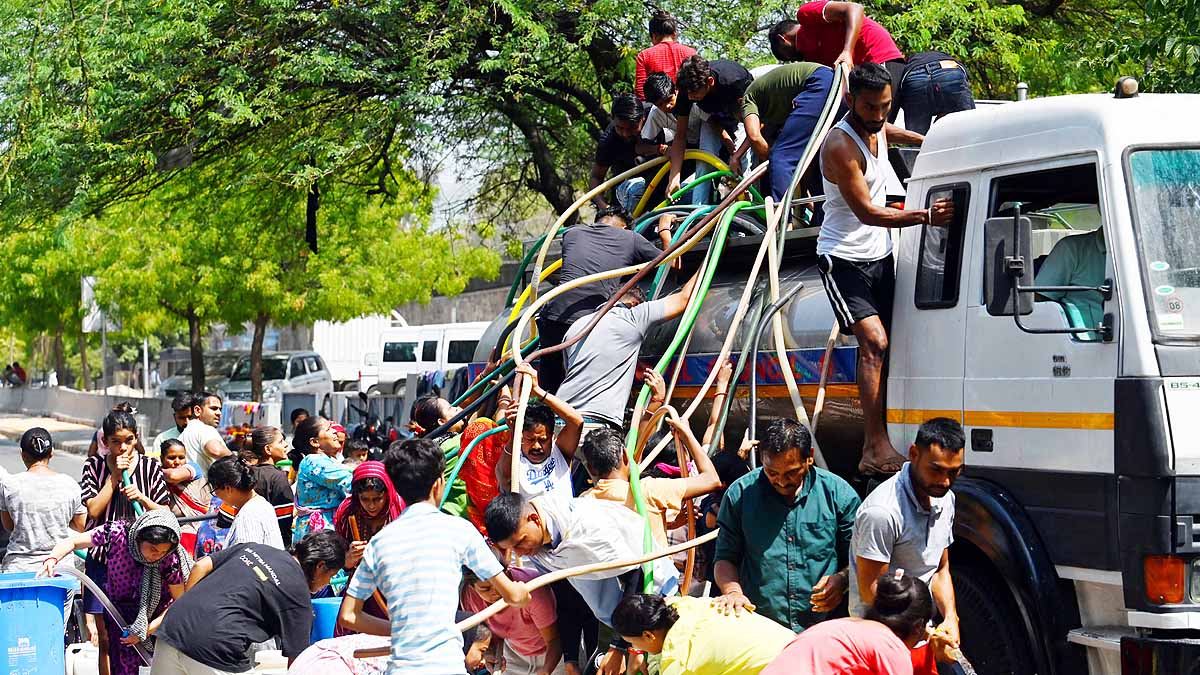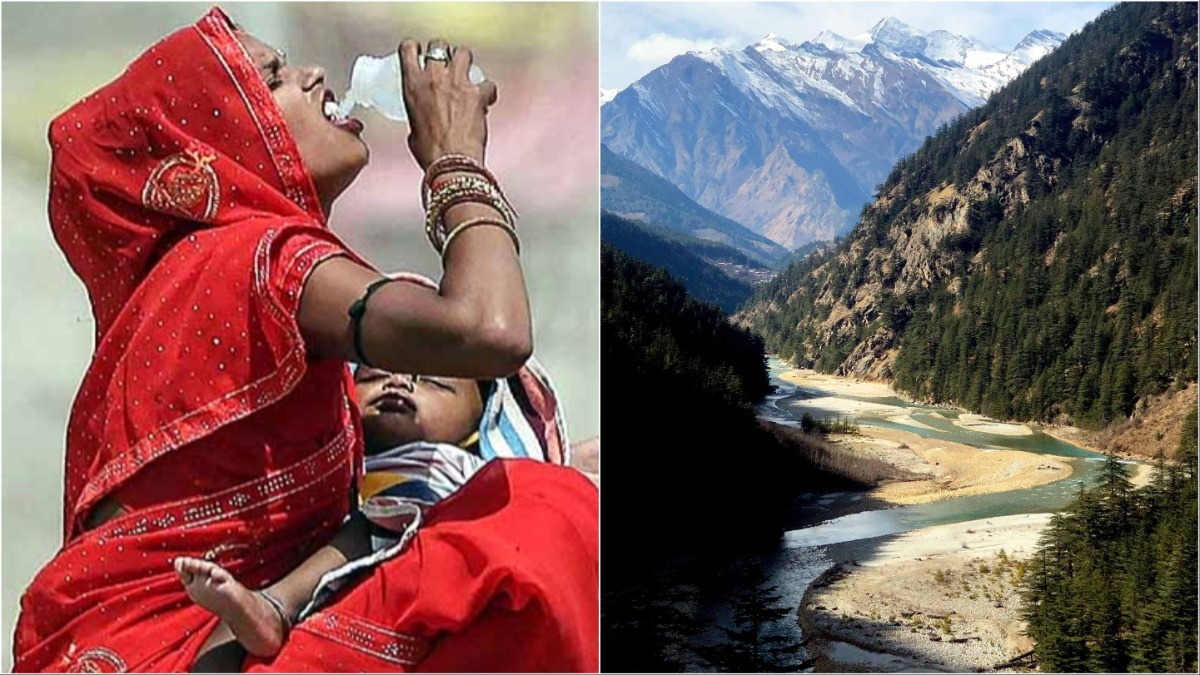Diminishing snowfall in the Himalayas is precipitating a noticeable decline in the Ganges River basin's snowpack. It has receded by a significant 17% this year, exacerbating the situation compared to the already noted 15% drop recorded in 2018. Consequently, the Ganges River's flow has equally diminished by 17%.
Research from the Nepal-based International Centre for Integrated Mountain Development (ICIMOD) highlights this trend. For the nearly 240 million people inhabiting the mountainous and plains regions, Himalayan snow serves as a crucial water source. This year, snowfall in the Hindu Kush mountains has been notably below average.
When about 23% of the snow from the Hindu Kush Himalayan (HKH) region melts, it contributes to the flow of 12 major river basins. However, the water discharge varies across different rivers. For instance, snowmelt from the Hindu Kush Himalayas accounts for 74% of flow in the Amu Darya River, 77% in the Helmand, and 40% in the Indus.
The decrease in the Ganges means life-altering implications for millions.
In the past 22 years, the flow of the Ganges River has exhibited considerable fluctuation. The year 2018 recorded the lowest snowpack in the basin at a mere 15.2%. Contrastingly, 2015 saw the highest snowpack at 25.6%. Due to this year's lower snowfall rates, the snowpack has dropped to 17%.

Source: aajtak
The HKH region is melting at a faster pace than expected, with implications that extend beyond the immediate area. Notably, how does this affect other rivers crucial to the ecosystem?
In the Amu Darya River basin, snowpack measured 17.7% in 2018, a decrease from the 32.1% high in 2008. This year saw a further dip to 28.2%, which is below average, preempting a potential scarcity of water compared to previous years.
Similarly, the Brahmputra River basin experienced its lowest snowfall in 2021 with a 15.5% decrease. The highest on record for this basin was 27.1% in 2019. However, this year plummeted to a meager 14.6%, which is well below the usual rates.
From 2018 till the present, the Helmand River basin averaged 41.9% in snowfall, peaking at 44% in 2020. This year, the figure has dropped to 31.8%, indicating water accessibility issues for the populations that depend on this basin's flow.
The snowpack in the Indus River basin was at its lowest in 2018, falling 9.4% below average. While 2020 observed a 15.5% snowfall, the current year marks a 23.3% shortfall from normal levels, suggesting impending water deficits for Pakistan.
The Irrawaddy River basin has had its share of fluctuating snowfall over the past 22 years, averaging around or below 15%. In 2023, the snowpack was 19.2%, a slight drop from 2017's lowest record of 12.5%. This year, it's down by 2.4% from normal figures.
The Mekong River basin, in contrast, has seen an increase in both water discharge and snowfall over recent years. In 2021, snowfall was 38.4% less than the average, but both 2019 and 2020 broke records with 68.8% and 52.5%, respectively. This year, the drop is only 1.1% from the standard rate.

Source: aajtak
What remains undiscussed is the real culprit behind this dire water shortage? Scientists sound an alarm that nearly one-fourth of the total water flow to the region's 12 major river valleys is resultant of melting snow. This serves as a forewarning for researchers, policy makers, and the public at large.
Less snow accumulation and volatile snow levels are intensifying the risk of water shortages. Climate change, with its irregular precipitation patterns and shifting weather phenomena, is a key driver behind this trend. This year, snow levels in the Hindu Kush and Himalaya regions have sunk to nearly a fifth below the norm.




